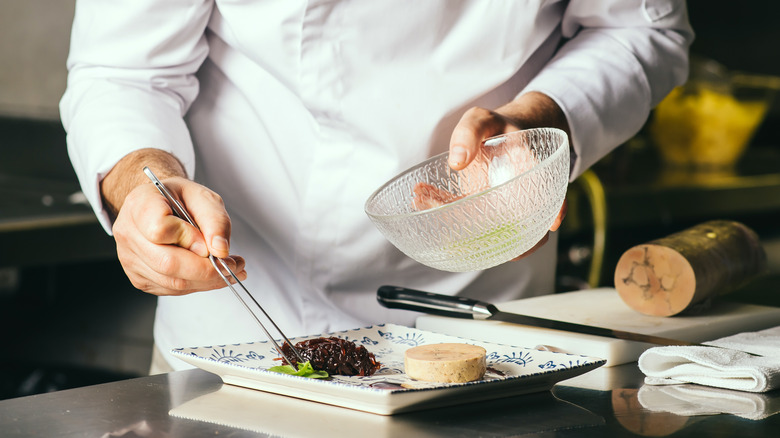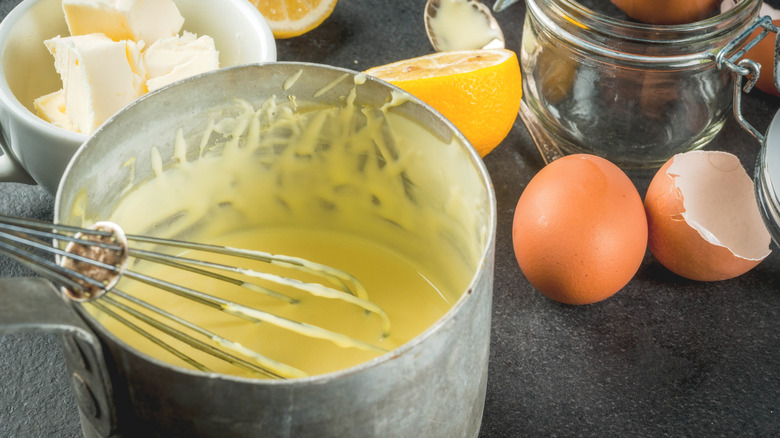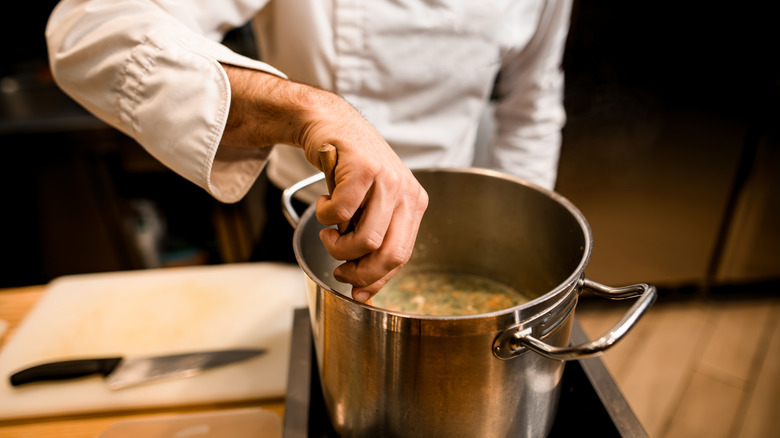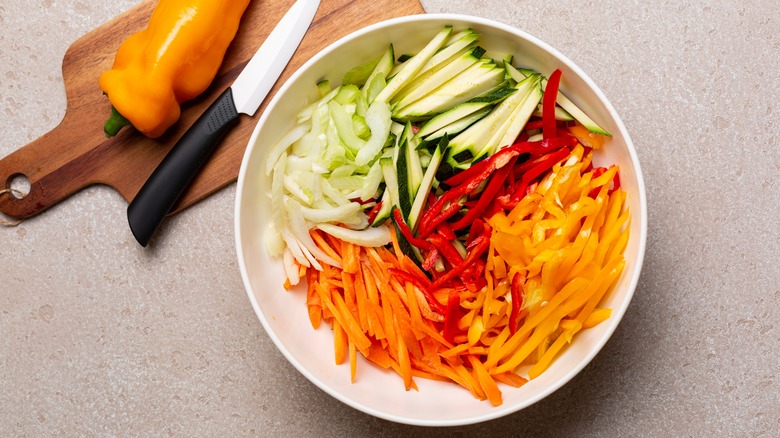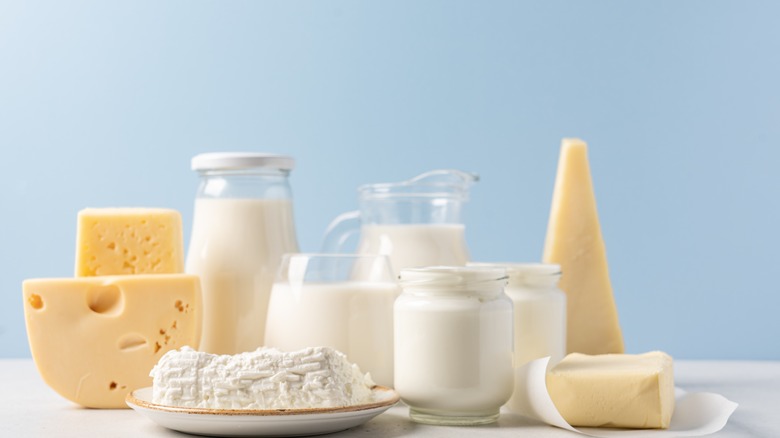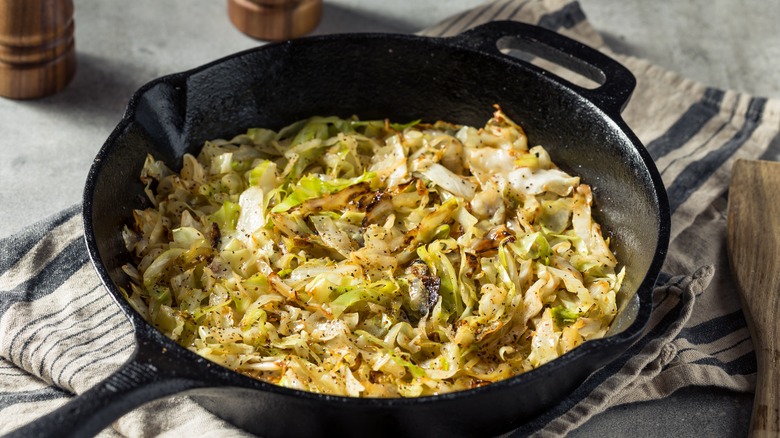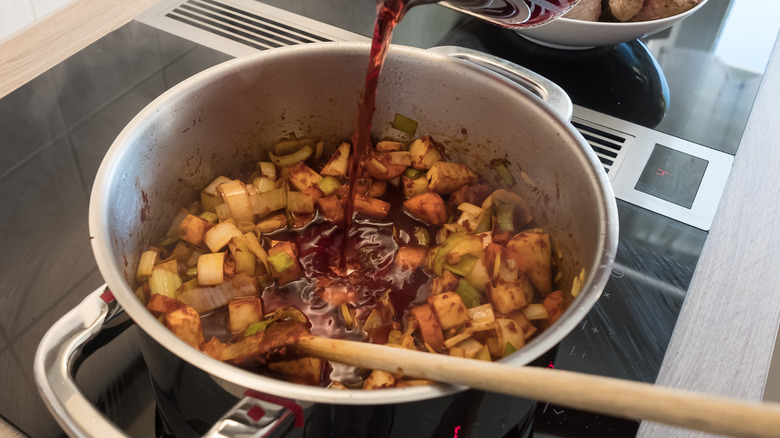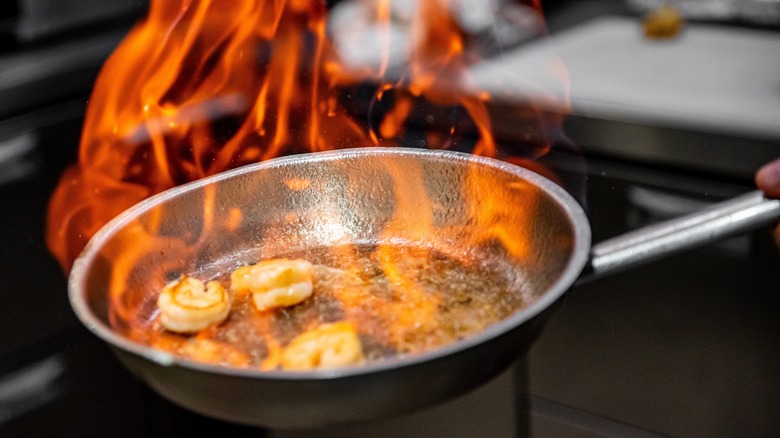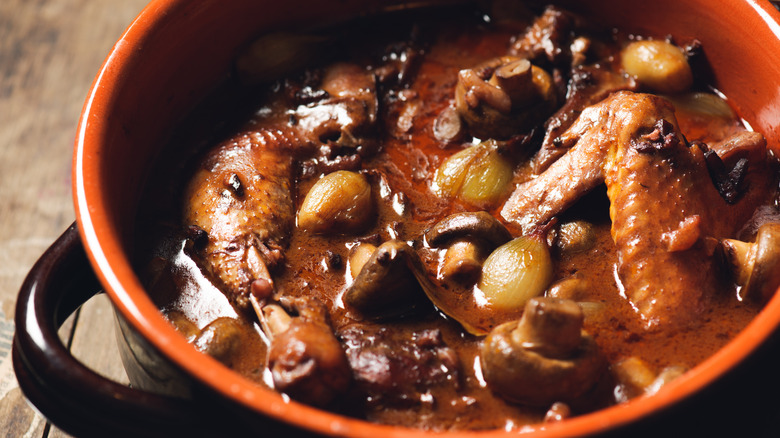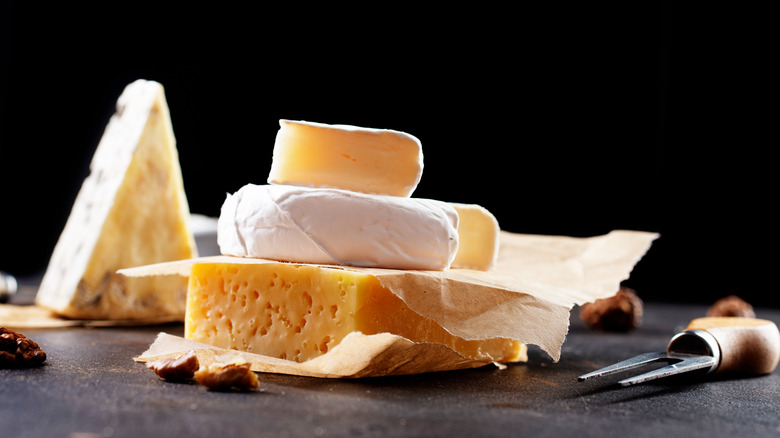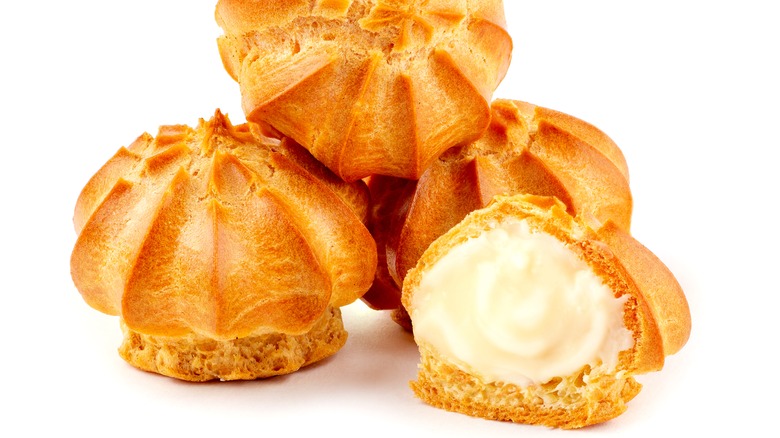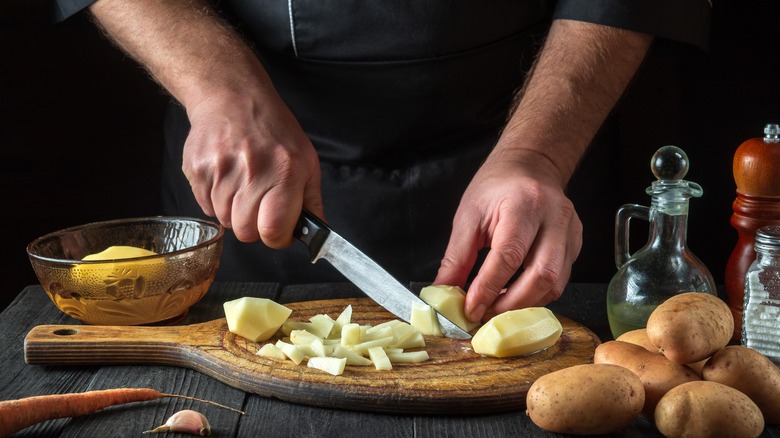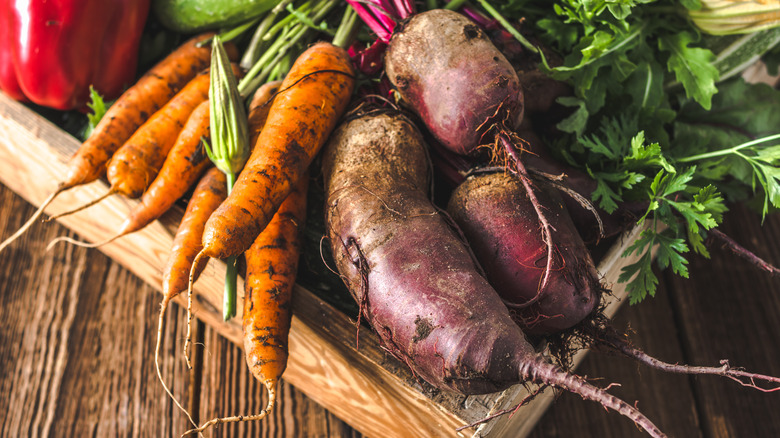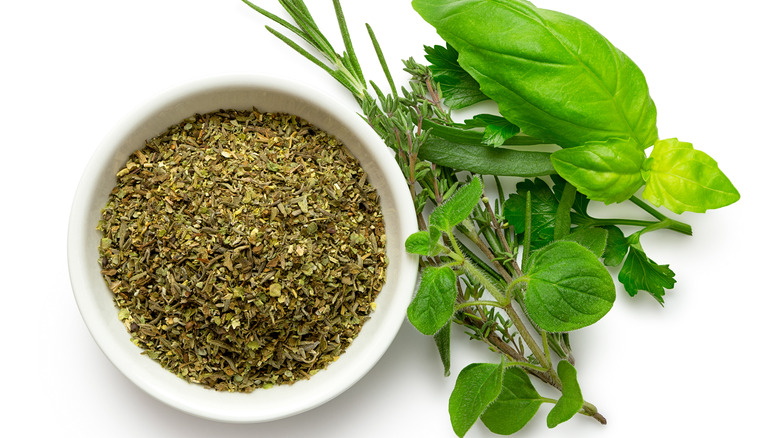French Cooking Tricks Every Home Chef Should Know
French cooking, known for its elegance and decadent flavor profiles, is revered globally and considered to be some of the best in the world. As a country, France has earned more Michelin stars than any other nation, and many dishes found in other cuisines are based on traditional French cooking techniques. If you are a serious home cook, mastering French cooking skills should be high on your list of priorities. This does not just involve learning recipes; it means developing an understanding of the fundamental processes that are required to treat ingredients with care and balance different flavors perfectly.
From mastering the mother sauces to fine-tuning your julienne, each step will take you closer to elevating your cooking across all cuisines and making you a more intuitive home cook. It will allow you to cook with confidence and begin to invent your own creations in the kitchen. Join us as we delve into the world of French cuisine, exploring the challenges and rewards that come with mastering this legendary approach.
The mother sauces
At the heart of French cuisine lie the five 'mother sauces.' These are considered the backbone of every sauce in French cooking and were first suggested in the 19th century by acclaimed chef Marie-Antoine Carêm. George Escoffier updated them in the 20th century to include sauce tomate, creating the list that is now accepted in gastronomic circles worldwide. According to Escoffier, every sauce is an extension of one of the mother sauces, so mastering these is the first step to succeeding in French cooking.
Velouté, meaning velvety, is a light, elegant sauce made from a roux and chicken or fish stock. It goes well with fish, meat, or eggs, and adding cream and herbs to it will create a variety of delicious secondary sauces.
Béchamel is similar to velouté but made with milk instead of stock. It is the base of many dishes, including gratins and croque monsieur. Thick cream sauces such as mornay and soubise can be made using béchamel as a base.
Sauce espagnole is made from finely diced vegetables, tomato paste, and a meat stock. Roux is added to thicken, and the classic sauce Bourguignon can be made from it.
Rich hollandaise sauce is an emulsion of egg yolks, butter, and lemon juice or vinegar. It is famously the star of eggs Benedict, but also makes a great accompaniment to meat and fish.
Adorning plates of pasta worldwide, sauce tomate is a simple reduction of tomatoes and vegetables, which traditionally includes meat to deepen the flavor. It forms the base for the French classic sauce Provençale, as well as Creole and Milanese.
Stocks and broths
While stock cubes and store-bought broth are convenient time savers, they have no place in traditional French cuisine. Stocks and broths should always be homemade to impart a depth of flavor to your dishes.
Though stocks and broths are very similar in terms of flavor, there is one distinct difference in classical French cuisine: Broth is made from vegetables and/or meat, whereas stock is made from bones. Collagen from the bones will thicken the stock, giving it a gelatinous texture that is not present in broth. To make a stock, simmer the bones from the meat or fish of your choice, along with chopped vegetables and herbs, for three to four hours. It's a great way to use up leftover bones from a roast bird, meaning you are putting the whole animal to use. Stock can then be used as a base for sauces and soups. Broths, on the other hand, are made by cooking meat or vegetables in a liquid and saving the liquid to use in other dishes. For this reason, broths can be vegetarian, whereas a true stock cannot.
The classic French consommé is a rich broth or stock that is clarified by adding and then removing egg whites, resulting in a perfectly clear liquid. This sophisticated technique creates an elegant dish that encapsulates the essence of French cooking. By learning how to make quality homemade stocks and broths, your French-inspired dishes are guaranteed to have a wonderful depth of flavor and texture.
Knife skills
French cooking is all about precision, and this includes the preparation of ingredients. To improve your skills in the kitchen, you should learn the main ways to chop ingredients in a uniform manner, leading to more even cooking and improvement in texture and presentation.
Julienne is one of the more famous methods of cutting and is often used for firm vegetables that will be cooked quickly, such as bell peppers and celery. Also called the matchstick cut, it involves cutting vegetables into very thin, even slices around three inches in length. The julienne cut leads to the finest dice, known as brunoise. To create brunoise, collect several julienne strips together, then slice across to create tiny cubes around ⅛ inch thick — any smaller and they'd be considered minced. They can then be used as the base of a sauce or for an elegant garnish.
For more delicate vegetables and herbs, a chiffonade cut is often used. This involves creating thin ribbons by rolling up the leaves tightly and slicing them across into strips. If you plan to cook the vegetables, keep the slices fairly wide, though a very fine chiffonade is perfect as a garnish.
Batons and batonnets are thicker cuts than can be used to prepare vegetables, including potatoes for fries. Cut off the sides to create sharp edges before slicing into strips. Batons are around ¼ inch in width, whereas batonnet are a bit thinner. These cuts are ideal for heartier meals where a more rustic texture is required, though they should still be cut evenly and uniformly.
Embrace the fat!
French cuisine has a reputation for being unhealthy due to the amount of fat it uses, however, the rates of heart disease and obesity in France are amongst the lowest in the world and a third of the rates in the U.S. The French focus on high-quality fats from meat, butter, and cream — as opposed to processed hydrogenated and trans fats — may be the reason for this unexpected result (via Healthline). Embracing fat is essential when cooking French food, as many recipes rely on the rich flavor found in these foods.
Butter is a cornerstone of French cuisine, used for sauteing, making sauces, and creating the light, flaky pastry that is the star of many sweet treats. Don't be shy when adding butter to your dishes, as its richness is key to both flavor and consistency, and definitely steer clear of imitation spreads.
Cream and cheese are both used liberally in French dishes, from the classic side dish gratin dauphinois to the comforting rustic tartiflette. Heavy cream is the best option when cooking to prevent it from splitting, but take care when adding acidic components like lemon juice, as there is still a chance it could curdle.
Using pork fat in the form of lardons is another great way the French make their dishes taste delicious. Similar to bacon but cut into short, thick matchsticks, lardons are added to salads for a delightful, indulgent hit alongside the vegetables, as well as to stews and soups for added depth of flavor.
Choose the best cooking method
There are several key methods of cooking within French cuisine, and selecting the best technique for each dish is essential to maximize flavors. Depending on the ingredients and style of the final dish, you may need to employ a few techniques to achieve culinary perfection.
Sauteing is a famous French cooking technique that involves frying ingredients over high heat, usually in butter. It is ideal for foods that cook quickly, such as seafood, vegetables, and thinly cut meats. Sauteing imparts a lot of flavor into the food but does not break down meats in the way that longer cooking methods do.
Roasting is a classic technique that suits many ingredients, particularly hard vegetables and large joints of meat. The slow-cooking method allows rich flavors to develop as the food caramelizes. When done properly, roasting results in juicy meat with a crispy outside and a perfectly tender middle.
Braising is used for tougher cuts of meat, where the protein needs to break down slowly in order to become tender. The meat is pan-seared and cooked slowly in a liquid, often with herbs and flavorings that are absorbed by the meat. Braising is used in classics such as boeuf Bourguignon and coq au vin.
Poaching is a gentle cooking method that is similar to boiling but at lower temperatures. It is famously used for eggs in classic dishes such as eggs Benedict but is often used in French cuisine for delicate fish such as salmon and trout.
Deglaze the pan
Deglazing is a technique that embodies the ability of French chefs to squeeze every drop of flavor into a dish, ensuring nothing gets left behind in the pan. It involves using a liquid, often alcohol, to dissolve the tiny pieces of food that have hardened onto the pan and add them to the gravy or sauce that will accompany the dish. These scraps of food, known as fond, are created during the Maillard reaction as food is roasted or sauteed. These delicious gems are packed full of deep flavor, but many home cooks leave them in the pan to be washed down the drain at the end of the night.
To avoid this gastronomic travesty, add a splash of wine, stock, or even water to the pan after the meat has finished cooking, and gently scrape the bottom of the pan as the liquid heats up. This simple method can transform leftovers into the base of a delicious sauce or gravy that contains the fragrant aromas of the meat or vegetables, resulting in a perfectly balanced, tasty dish.
Use alcohol to full effect
Although alcohol, particularly wine, is usually served alongside a meal, in French cooking alcohol is an integral ingredient that is often used to add depth of flavor to a dish. Commonly used to deglaze the pan, wine and spirits can also feature in both savory dishes and desserts to add a dash of flair and complexity.
Flambéing is a dramatic French technique that adds a distinctive caramelized flavor to certain foods. Famously used tableside in the 1970s to create a sprinkler-inducing steak Diane, flambéing involves setting fire to brandy or rum in the pan as the food cooks. When done correctly, the flame does not burn the food but simply imparts a deliciously smoky flavor.
Beyond flambéing, red and white wine are used extensively in sauces, stews, and marinades. The classic moules marinière is made with white wine, while both coq au vin and beef Bourguignon employ red wine. If you're not a big drinker, rest assured that any alcohol content remaining in the final dish is unlikely to have an intoxicating effect.
Master the classics
While there are many great French dishes, a few are renowned as true classics, and mastering a couple of these will help you on your way to becoming an expert. These dishes will impress friends and family, and allow you to hone your skills and refine your understanding of the basics of French cuisine.
Coq au vin, the iconic slow-cooked chicken dish, is a masterclass in layering flavors. Served in a rich sauce with red wine, bacon, mushrooms, and onions, the braised chicken falls off the bone in this indulgent comfort dish. Similarly, beef Bourguignon is about as classically French as it gets, with a rich, complex sauce accompanying beautifully tender, slow-cooked beef.
Ratatouille is a deceptively simple vegetable stew that highlights how fresh produce cooked well can create a magical outcome. Eggplant, zucchini, tomatoes, and bell peppers combine to create a vibrant flavor explosion.
When it comes to desserts, no one does it quite like the French, and the classic tarte tatin is a great one to master. An upside-down pastry where the fruit is caramelized in butter and sugar offers the perfect balance of sweetness at the end of a meal.
Learning to create a few classic French dishes will help to expand your culinary repertoire and enhance your appreciation for the intricacies of French cuisine. As your understanding improves, you will be able to incorporate these newfound techniques into your cooking on a daily basis, bringing out the best in your ingredients and dishes.
Say Cheese!
If you were asked to name one food item that is synonymous with France, there is a good chance you would say cheese. Fromage is an indispensable ingredient in French cuisine, and with over 1,200 varieties of French cheese, it is no surprise. Though cheese is often enjoyed on its own as a separate course, it is also used widely in French dishes.
There are many different flavor profiles across the varieties of French cheeses, and understanding these characteristics is crucial for selecting the correct option for a dish. From a crumbly blue for topping a fresh, green salad to a creamy Camembert served with a warm baguette, learning about the main categories of French cheese will help you transform your dishes into culinary masterpieces.
Finishing off a meal with a cheese platter is an opportunity to show off your artistic talent as well as your culinary knowledge. By assembling a variety of colors, flavors, and textures of cheese, you can create a visually appealing showpiece that will take your guests on a gastronomic journey across France. Enjoying French cheese is about so much more than just food — it's an appreciation of the history and culture of a nation where food is celebrated and savored.
Learn the pastry basics
French pastries are celebrated worldwide for their light texture and superb flavor, and learning pastry basics is an important part of becoming skilled in French cooking. Though there are many delicious pastry-based treats and desserts, from macarons to profiteroles, there are a few basic types that will allow you to flex your pastry-making muscles regularly.
Shortcrust pastry (known as pâte brisée) is a stalwart of French cuisine, used to make a variety of tarts, pies, and quiches. Made from flour, butter, and water, it is crucial to handle the pastry as little as you can to achieve a flaky buttery crust.
Puff pastry (known as pâte feuilletée) is another all-around pastry used in savory and sweet dishes, including croissants and mille-feuille. In contrast to shortcrust pastry, it benefits from being handled; folding it many times over will create its classic buttery layers.
Choux pastry is used in countless desserts, including profiteroles — used to make the magnificent croquembouche — and the delicate doughnuts known as beignets. It has ingredients similar to shortcrust pastry but with egg and more sugar added. Choux pastry puffs up beautifully in the oven, creating a hollow center perfect for filling with cream.
Mastering the basic pastries of French cuisine will allow you to create a wide range of savory and sweet baked goods with a delicious French twist. Though they may be challenging, with practice you will become comfortable with the unique properties of each.
Mise en place
The term 'mise en place,' which translates to 'put in place,' is the French concept of having everything prepared and ready to go before you actually start cooking. Being organized in the kitchen is crucial to ensure you are efficient and that no mistakes are made.
Before you heat up your pans, make sure not to get ahead of yourself. All of your vegetables should be chopped, herbs and seasonings measured and prepared, and meat should be removed from the fridge to come up to room temperature. Having everything at hand from the beginning will make cooking the dish a smoother experience and save you scrambling about in the fridge in the middle of sauteing your vegetables.
Furthermore, having all of your ingredients measured out significantly reduces the chance of you making an error by omitting an ingredient or using the wrong quantity. You will be able to see at a glance if the ratio of flour to sugar is wrong when they are sitting side-by-side on the countertop, something that is less likely if you measure as you go.
The beauty of mis en place is that it leads to a less stressful cooking experience all round. With everything prepared in advance, you can enjoy the process of creating your culinary masterpieces, safe in the knowledge that you've already taken care of the precision part. By showing respect to the ingredients, you create a meal worthy of the great French legends.
Choose seasonal ingredients
In French cuisine, some of the most delicious dishes can actually be the most simple — think salade Niçoise or ratatouille. This is due to the strong emphasis on fresh, seasonal ingredients that is rooted in French culinary philosophy. This makes eating in France a joy year-round since local specialties will change with each passing season.
By choosing ingredients that are in season, you are guaranteeing the best flavor from that produce. If the crops are grown locally, they will not have to travel far to make it onto your chopping board, meaning they will be packed full of both flavor and nutrition. This makes your job easier, as less needs to be done to their naturally vibrant flavor.
Local seasonal produce is sometimes less expensive due to the lower transportation costs. Why pay a fortune for imported strawberries in winter when you can have delicious in-season pears and oranges instead? By planning meals according to the seasons, you can have a varied menu that makes the most of the ingredients close to your doorstep. This approach has the potential to benefit your tastebuds and wallet while also supporting local farmers and reducing the carbon footprint of your food.
Use fresh and dried herbs appropriately
Herbs make up a vital aspect of French cuisine, and learning how to use and balance them is important in your journey to master the basics. Both fresh and dried herbs have a place in French dishes, but they are not always interchangeable. Knowing when to use each type will help ensure your dishes aren't overpowered or bland.
Fresh herbs are used to create brightness and zing in a dish. They are often added towards the end of the cooking process, as otherwise, their flavor can be diluted. Parsley, chervil, and tarragon are used in countless French classics, from béarnaise sauce to sole meunière. Their clean flavors lift the dish and allow the sauce to dance on the palate.
Dried herbs, on the other hand, have a much more intense flavor and should be added early in the cooking process, to create depth of flavor. Thyme and rosemary are popular choices and feature in gratin dauphinoise and coq au vin. Herbes de Provence is a dried herb mix containing thyme, basil, rosemary, tarragon, savory, marjoram, oregano, and bay leaf. It originated in the Provence region in the far south of France and can be used to season many French dishes, particularly those with a Mediterranean flavor profile. By balancing fresh and dried herbs in your French cooking, you will ensure that your meals are bursting with flavor and have the authentic taste of France.
Slow down and enjoy the meal
Once you have created your French culinary sensation, it's time to serve, and understanding the dining experience is just as important as mastering the techniques and ingredients. In France, meals are about more than just satisfying hunger; they are an opportunity to slow down and savor the food that has been served, enjoying it with loved ones when possible.
Eating the main meal of the day in France is a long, leisurely experience, often lasting several hours and involving multiple courses. In our fast-paced society, many of us eat on the go or shovel food into our mouths as fast as we can to allow us to get on with our next task. This mindless eating has taken the joy out of food for many and is likely contributing to health problems across the country. By embracing the French way of eating, we can reconnect with the food in front of us, as well as those around us who are sharing the meal.
If you have slaved away in the kitchen for hours to prepare your French gastronomic triumph, it will feel satisfying to have everyone sit around the table together and enjoy the food you have prepared. It shows respect for the ingredients and the chef, and it allows everyone to enjoy some precious relaxation time together without worrying about the next item on your to-do list.

